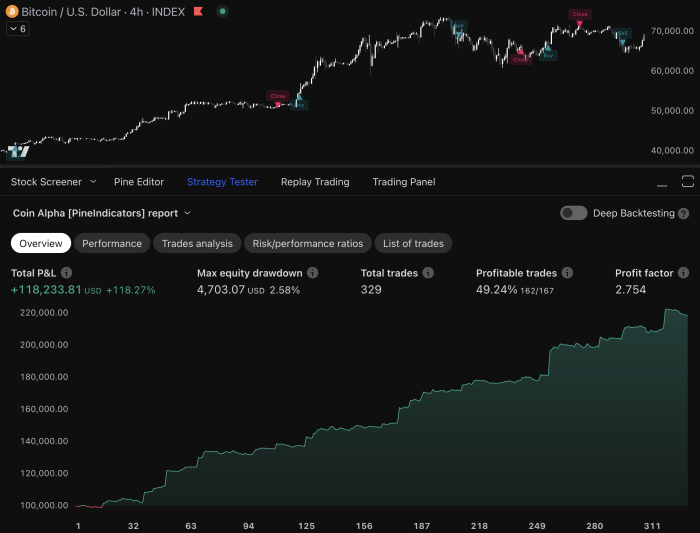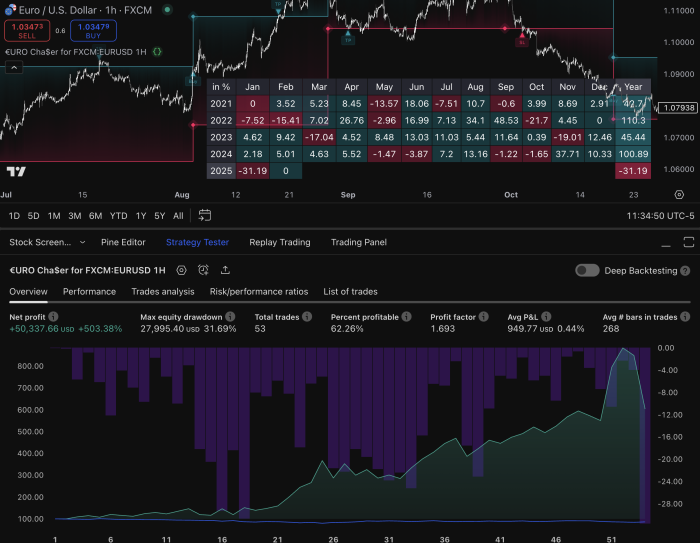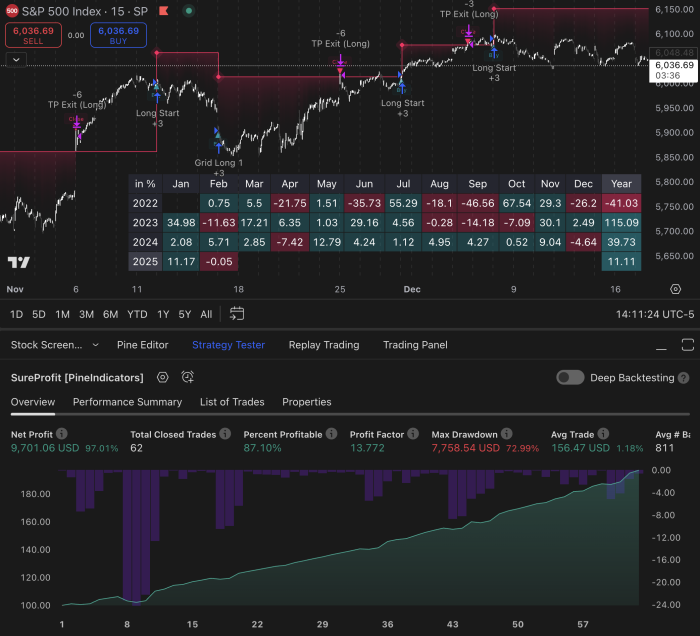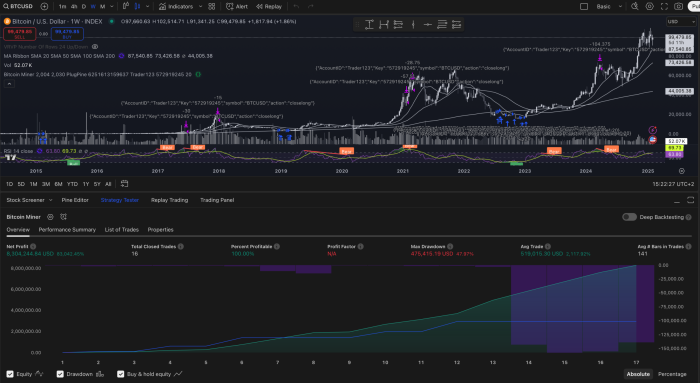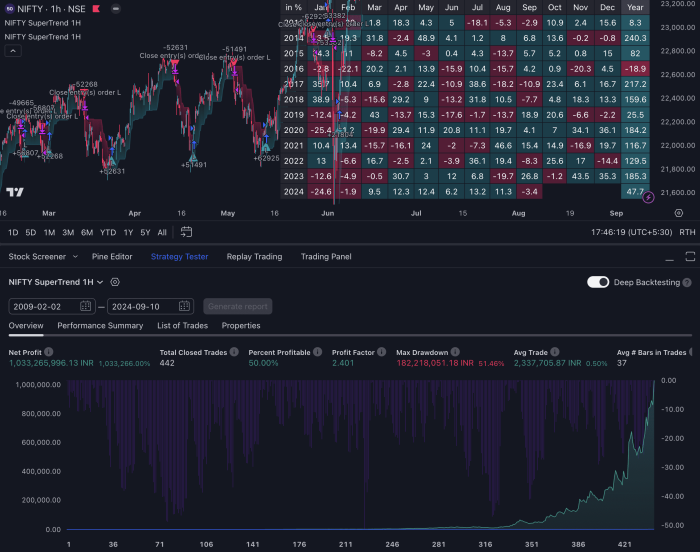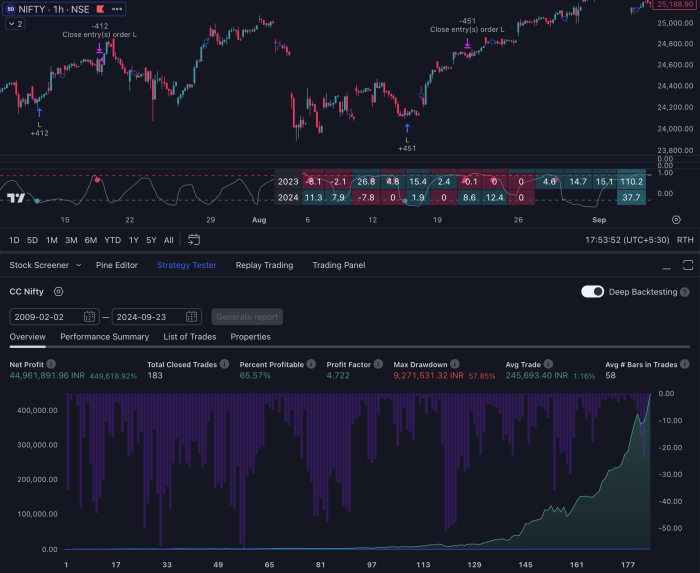Pine Script is a domain-specific programming language created by TradingView, designed specifically for writing custom technical analysis indicators and strategies. As the financial markets become increasingly complex, traders are seeking more sophisticated tools to analyze price movements and make informed decisions. Pine Script empowers traders to create personalized trading strategies that can be tailored to their unique trading styles and preferences.
This flexibility allows for the development of both simple indicators and complex algorithms, catering to a wide range of trading methodologies, from scalping to long-term investing. The rise of algorithmic trading has further amplified the importance of programming languages like Pine Script. Traders can automate their strategies, reducing the emotional component of trading and allowing for more disciplined execution.
With Pine Script, users can backtest their strategies against historical data, optimizing their approach before deploying it in live markets. This capability not only enhances the trader’s understanding of their strategy’s performance but also builds confidence in their trading decisions. As we delve deeper into Pine Script, we will explore its syntax, applications, and how it can be leveraged to create robust trading strategies.
Key Takeaways
- Pine Script is a powerful tool for creating custom trading strategies and indicators on the TradingView platform.
- Understanding the Pine Script language is essential for developing and implementing effective trading strategies.
- Building custom indicators and strategies in Pine Script allows traders to tailor their approach to the market.
- Implementing advanced risk management techniques in Pine Script is crucial for protecting capital and maximizing returns.
- Backtesting and optimizing Pine Script strategies is key to ensuring profitability and success in trading.
Understanding Pine Script Language and its Application in Trading
Pine Script is characterized by its simplicity and ease of use, making it accessible even for those with limited programming experience. The language is built around a straightforward syntax that allows traders to define variables, create functions, and implement conditional logic with relative ease. For instance, a basic moving average can be calculated using just a few lines of code, enabling traders to visualize trends quickly.
The language supports various data types, including integers, floats, and strings, which can be utilized to manipulate and analyze market data effectively. In terms of application, Pine Script is primarily used for developing custom indicators that can be plotted on TradingView charts. Traders can create anything from simple overlays like moving averages to more complex indicators such as Bollinger Bands or MACD.
Additionally, Pine Script allows for the creation of alerts based on specific conditions, enabling traders to stay informed about market movements without constantly monitoring charts. This feature is particularly beneficial for those who employ a strategy that requires timely execution based on market signals.
Building Custom Indicators and Strategies in Pine Script

Creating custom indicators in Pine Script begins with defining the parameters that will drive the indicator’s calculations. For example, if a trader wants to create a custom RSI (Relative Strength Index) indicator, they would start by defining the length of the period over which the RSI will be calculated. The trader can then use built-in functions to compute the average gains and losses over that period, ultimately deriving the RSI value.
This process illustrates how traders can tailor indicators to fit their specific trading strategies or market conditions.
Beyond simple indicators, Pine Script also allows for the development of comprehensive trading strategies that include entry and exit signals. A trader might decide to implement a strategy based on moving average crossovers, where they buy when a short-term moving average crosses above a long-term moving average and sell when the opposite occurs.
By coding these conditions into Pine Script, traders can automate their decision-making process. Furthermore, they can incorporate additional filters or conditions to refine their strategies, such as volume thresholds or price action patterns, enhancing the robustness of their trading approach.
Implementing Advanced Risk Management Techniques in Pine Script
| Technique | Description | Benefits |
|---|---|---|
| Volatility-based Position Sizing | Adjusting position size based on market volatility | Reduces risk during high volatility periods |
| Stop Loss and Take Profit Orders | Setting predefined exit points for trades | Helps limit losses and lock in profits |
| Correlation Analysis | Assessing the relationship between different assets | Identifies diversification opportunities |
| Monte Carlo Simulation | Using random sampling to model potential outcomes | Provides insights into potential portfolio performance |
Risk management is a critical component of successful trading, and Pine Script provides tools to implement advanced techniques effectively. One common method is position sizing, which involves determining how much capital to allocate to each trade based on the trader’s risk tolerance and account size. By coding position sizing rules into Pine Script, traders can ensure that they are not overexposing themselves to any single trade.
For instance, a trader might set a rule that limits their risk to 1% of their total account balance on any given trade. Another essential aspect of risk management is setting stop-loss and take-profit levels. In Pine Script, traders can program these levels based on various criteria, such as volatility or support and resistance levels.
For example, a trader might choose to set a stop-loss at a certain percentage below the entry price or at a key support level identified through technical analysis. By automating these risk management techniques within their scripts, traders can maintain discipline and adhere to their trading plans even in volatile market conditions.
Backtesting and Optimizing Pine Script Strategies for Profitability
Backtesting is an invaluable process that allows traders to evaluate the effectiveness of their strategies using historical data. In Pine Script, backtesting is facilitated through the use of built-in functions that simulate trades based on historical price movements. Traders can define their entry and exit conditions within the script and then run the backtest to see how the strategy would have performed over a specified period.
This process not only provides insights into potential profitability but also highlights areas for improvement. Optimization is another critical step in refining trading strategies. After backtesting a strategy, traders may identify specific parameters that could enhance performance.
For instance, adjusting the length of moving averages or modifying stop-loss levels can significantly impact results. Pine Script allows for parameter optimization by enabling traders to test various combinations systematically. By analyzing performance metrics such as win rate, profit factor, and maximum drawdown during this optimization phase, traders can fine-tune their strategies for better results in live trading environments.
Leveraging Pine Script for Automated Trading and Alerts

One of the most powerful features of Pine Script is its ability to facilitate automated trading through alerts and execution signals. Traders can set up alerts based on specific conditions defined in their scripts, allowing them to receive notifications when certain criteria are met. For example, if a trader has created a strategy based on moving average crossovers, they can set an alert to notify them when a crossover occurs, prompting them to take action.
Moreover, while Pine Script itself does not directly execute trades on brokerage accounts, it can be integrated with third-party services that allow for automated execution based on alerts generated by TradingView. This integration enables traders to implement their strategies without manual intervention actively. By leveraging these capabilities, traders can capitalize on market opportunities more efficiently and reduce the likelihood of missing critical entry or exit points due to human error or oversight.
Advanced Pine Script Techniques for Scalping and Swing Trading
Scalping and swing trading are two distinct trading styles that require different approaches when utilizing Pine Script. Scalpers typically aim for small price movements over short time frames, necessitating rapid execution and precise indicators. In this context, traders might develop custom scripts that incorporate high-frequency indicators such as tick volume or order flow analysis to identify micro-trends within seconds or minutes.
On the other hand, swing traders focus on capturing larger price movements over several days or weeks. For this style of trading, Pine Script can be used to create more complex indicators that analyze broader market trends and patterns. For instance, a swing trader might develop a script that combines multiple time frame analysis with oscillators like Stochastic RSI or MACD divergence to identify potential reversal points in the market.
By employing advanced techniques tailored to their specific trading style, traders can enhance their decision-making processes and improve overall performance.
Case Studies and Examples of Successful Pine Script Trading Strategies
Examining real-world case studies provides valuable insights into how traders have successfully implemented Pine Script strategies in various market conditions. One notable example is a trader who developed a mean reversion strategy using Bollinger Bands in conjunction with RSI. The script was designed to identify overbought or oversold conditions based on price movements relative to the Bollinger Bands while confirming signals with RSI levels above 70 or below 30.
Backtesting this strategy revealed consistent profitability during ranging market conditions. Another case study involves a trend-following strategy utilizing exponential moving averages (EMAs) combined with volume analysis. The trader created a script that generated buy signals when the 50-period EMA crossed above the 200-period EMA while confirming increased volume on the breakout day.
This approach capitalized on strong trends while filtering out false signals during low-volume periods. The success of this strategy was evident in its ability to capture significant price movements over extended periods while maintaining strict risk management protocols.
Through these examples, it becomes clear that Pine Script offers immense potential for traders willing to invest time in developing and refining their strategies.
By leveraging its capabilities effectively, traders can create robust systems that adapt to changing market dynamics while enhancing their overall trading performance.
If you are interested in advanced Pine Script trading strategies, you may also want to check out this article on the best Pine Script bots. This article provides valuable insights into how automated trading bots can enhance your trading experience and help you execute more complex strategies efficiently. By combining advanced Pine Script strategies with the use of bots, traders can potentially optimize their trading performance and achieve better results in the market.
FAQs
What are advanced Pine Script trading strategies?
Advanced Pine Script trading strategies are complex and sophisticated trading techniques developed using the Pine Script programming language on the TradingView platform. These strategies go beyond basic technical analysis and incorporate advanced indicators, algorithms, and custom logic to make trading decisions.
How are advanced Pine Script trading strategies developed?
Advanced Pine Script trading strategies are developed by writing custom scripts using the Pine Script programming language. Traders can create their own indicators, signals, and trading algorithms to implement their unique trading strategies.
What are the benefits of using advanced Pine Script trading strategies?
Using advanced Pine Script trading strategies allows traders to create highly customized and tailored trading approaches that can adapt to different market conditions. These strategies can also automate trading decisions and provide a competitive edge in the financial markets.
Are there any risks associated with using advanced Pine Script trading strategies?
As with any trading strategy, there are risks associated with using advanced Pine Script trading strategies. These risks include potential coding errors, incorrect strategy implementation, and the inherent risks of trading in financial markets. It is important for traders to thoroughly test and validate their strategies before using them in live trading.
Can advanced Pine Script trading strategies be backtested?
Yes, advanced Pine Script trading strategies can be backtested using historical price data to evaluate their performance and effectiveness. Backtesting allows traders to assess the profitability and risk of their strategies before applying them to live trading.
Are there any resources available for learning advanced Pine Script trading strategies?
Yes, there are various resources available for learning advanced Pine Script trading strategies, including online tutorials, forums, and educational materials provided by TradingView. Additionally, traders can leverage the community of Pine Script developers to learn and share knowledge about advanced trading strategies.

